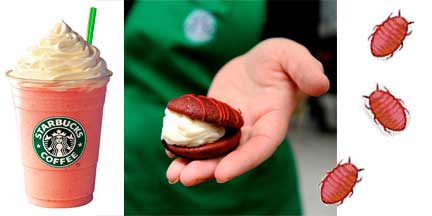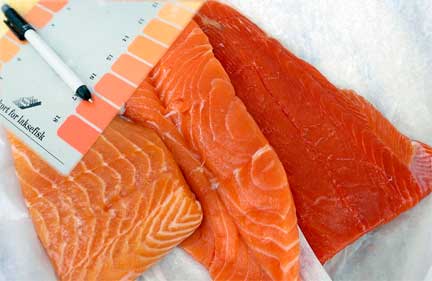
Bug juice “red” made the news when it was exposed as Starbuck’s food coloring used in strawberry frapuccinos. After a public outcry – even from non-vegetarians – Starbucks announced it has stopped using it.
This isn’t just a vegetarian outrage or the questionable appeal of bug juice in your food - which by the way doesn’t bother me because it’s a natural alternative to the controversial red food dye #5 derived from coal tar. The real crime is disclosure and deception.
First of all, disclosure: There are moral issues for vegetarian and kosher diets and there are health issues. Natural food colorings such as cochineal (aka “bug juice”) and artificial additives such as red dyes #2 and #40 can cause allergic reactions.
Second, the greatest offense is deception: Starbucks advertised its Strawberry Frappuccinos and Smoothies as vegan-friendly.
In the meantime, “cochineal” (the name of the colorant extracted from beetles) and its close relative “carmine” will continue to be used as dye in pies, jello, juices (cranberry and pink grapefruit), dried shrimp, pork sausage, candies, pills, jams, and the brightly colored maraschino cherries.
The new US FDA law (January 2011) requires declaration of the color additives cochineal extract and carmine in the ingredient statement on the label of all food and cosmetic products that contain those additives.
This example of color deception reminds us of an even greater reality: Color implies ingredients or characteristics that a food product may NOT contain (such as real carrots in carrot cake that actually contains no carrots).

Farmed salmon is dyed to match consumers’ image of fresh salmon – a bright orange to red. Wild salmon get their vivid color from carotenoid pigments in the shellfish they eat. Even though farmed salmon may have a similar diet, they absorb the pigments at a lower rate. Therefore, astaxanthin is added to the fish feed.
It’s worth noting that astaxanthin is thought to be a beneficial and powerful antioxidant for human consumption when consumed in capsule form – much larger doses than what is ingested in farmed salmon.
Even though the colorant may not be harmful, farmed salmon is not as healthy as wild salmon. Farmed fish provide less usable beneficial omega 3 fats than wild fish. They may also be doused with antibiotics and exposed to more concentrated pesticides than their wild kin.
Once again, deception prevails.
Sources:
Salmon Study - Univ. of Albany, Institute of Health & the Environment

